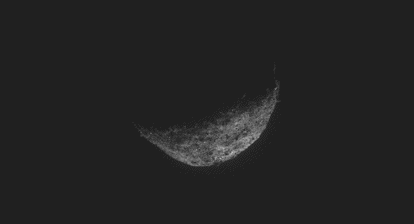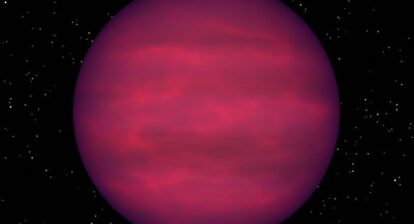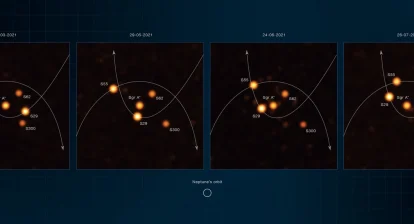Video on space missions to collect asteroid dust
I hope you enjoy the show. You can subscribe to the You Tube Channel for more on science, history and nature. Please do check out the website, follow on social media Twitter // Instagram // Facebook // Reddit // Tiktok and check out the audio podcast on Apple Podcasts // Stitcher // TuneIn // Spotify
Blogpost/Transcript
Exciting topic today people! We have sent out two missions to asteroids that will bring back soil samples! Now that’s no small feat – the asteroids are moving at a speed of 25 Km/s – their speed varies based on their distance from the sun. Meanwhile, these two spacecraft are entering the orbit of the asteroids, identifying sample sites, collecting soil samples, leaving the orbit, sending data back to earth and of course coming back to earth with those soil samples. Very cool!
Although we have witnessed some fantastic advances in space exploration and learned about Jupiter, Saturn, Pluto and even more about exoplanets (which are basically planets that orbit other stars), one thing we have rarely been able to do is actually analyse the composition of Solar System bodies in our labs on Earth.
This might soon be accomplished thanks to these two missions, Hayabusa2 and OSIRIS-REx, BOTH of which have the lofty goals of bringing back samples from two asteroids.
Now Before we talk about the missions, let’s go over what asteroids really are and where they come from. They are rocky airless bodies left over from the early days of the formation of our solar system 4.5 billion years ago – basically, they are space rubble! The current asteroid count according to NASA is 958,729. That means these are only the ones that have been counted. There are probably millions out there.
Most of this lumpy, potato-shaped rubble is orbiting the Sun between Mars and Jupiter – known as the main asteroid belt. They range from largest one, Vesta, which is 530 km (329 mi) in diameter, to those less than 10 meters. Here’s a fun fact, the total mass of all the asteroids combined, is less than that of our Moon.
(Check out Comets, Asteroids and Meteors – What’s the difference?)
So that scene from Star Wars where the Millennium Falcon had to pass through an asteroid belt and kept getting hit by them incessantly, is probably inaccurate because if we consider our asteroid belt, there is miles and miles of space between each asteroid. Han Solo can easily drive his spacecraft through it.
There is another body in the asteroid belt called Ceres, which is actually a dwarf planet. Scientists believe that the asteroid belt had enough material for another planet to form billions of years ago (and maybe Ceres could have become one). But 4.5 billion years ago, Jupiter travelled to the inner solar system and scattered all the material in its path because of its gravitational field. So, it is because of Jupiter that we have an asteroid belt instead of another planet. It is also because of Jupiter that Ceres is not able to clear its neighbourhood from asteroids that are in its orbit. Which is one of the preconditions for a body to be classified as a planet: it is supposed to have a cleared out the path of its orbit.
This god-father of planets, Jupiter, once in a while also chucks an asteroid our way but mostly its gravity protects Earth from oncoming asteroids and comets that might hit us. NASA’s Dawn spacecraft, launched in 2007 visited the largest asteroid Vesta in 2011 and then it went on to Ceres in 2015. This was essentially the first time a spacecraft had orbited a body in the asteroid belt.
(Check out Jupiter – Solar System’s Giant)
A side note about Ceres by the way – it is named after the goddess of grains and nutritious food crops. If you’re one of those people who got upset when Pluto was demoted to a dwarf planet then you can blame Ceres because it was after studying Ceres that scientists understood its similarities to Pluto. And this led to Pluto being designated a dwarf planet.
There are also asteroids called Jupiter Trojans, which are a group that share Jupiter’s orbit around the Sun and their estimated number is over 7,000, although scientists think there could be many more.
Let’s come to the exciting bit now. First up is Hayabusa 2 a Japan Aerospace Exploration Agency (JAXA) mission, with the objective to rendezvous with an asteroid called Ryugu (1999 JU3), land a probe and rovers on its surface, and then return to Earth with soil samples. Launched in December 2014 and Hayabusa2 arrived at Ryugu in June 2018; two rovers (Minerva II) and a lander (MASCOT) were deployed on Ryugu’s surface in September and October 2018.
Hayabusa2 follows on from the earlier Hayabusa mission, which ALSO returned asteroid samples in 2010 and those samples WERE analysed. But with new technology the analysis of the new samples will reveal so much more.
An exciting thing happened in February 2019, when Hayabusa 2 fired an impactor into Ryugu, created an artificial crater and collected sub surface soil samples that are now on their way back to Earth, along with 2 other soil samples.
Hayabusa2 left Ryugu in November 2019 and will be returning to Earth later in 2020. The science instruments on the orbiter and rovers investigated the surface of the asteroid, providing environmental and geological data about the samples collected, which will be analysed at JAXA’s Extraterrestrial Sample Curation Centre (which in itself is a cool name!).
When Hayabusa2 flies past Earth in late 2020, it will release the capsule containing the soil samples, which will re-enter the Earth’s atmosphere, deploy a radar-reflective parachute at an altitude of about 10 km, and eject its heat-shield, while transmitting a position beacon signal. The plan is to land the sample capsule at the Woomera Test Range in Australia. What will happen to Hayabusa2? It will retain 30 kg of its propellant, with the hope that this will able to extend its mission and fly to new targets.
Our second mission is NASA’s OSIRIS-Rex (the long-winded name is Origins, Spectral Interpretation, Resource Identification, Security, Regolith Explorer). Its objective is to travel to asteroid Bennu (1999 RQ36) and bring back a 60 grams sample. Launched in September 2016 OSIRIS-REx rendezvoused with Bennu in December 2018. On board, it has telecommunication equipment but more importantly, it carries instruments to study the asteroid in many wavelengths, take images and of course retrieve the sample
Science communication fun fact: The Planetary Society organised a campaign for people to have their names or artwork saved on a microchip, which the spacecraft now carries. Also, Bennu was named by nine-year-old Michael Puzio, who won a contest to name the asteroid.
When OSIRIS-REx entered Bennu’s orbit in December 2018 at approximately 1.75 km (1.09 mi), it started remote sensing and mapping exercises to select the sample site. At this altitude, it takes the spacecraft 62 hours to orbit Bennu. At the end of a detailed survey, it entered a closer orbit with a radius of 1 km (0.62 mi). In December 2019, after analysing the surface of the asteroid for a target sample area, the team leading the mission selected a collection site out of four candidates, which they called Nightingale. It is located in a crater in the northern hemisphere and NASA keeps releasing cool images of the site.
OSIRIS REx is expected to return in September 2023, and just like Hayabusa 2, a capsule will be landed under a parachute at the US Air Force’s Utah Test and Training Range. The samples will be analysed at NASA’s Astromaterials Research and Exploration Science Directorate (ARES) and at Japan’s Extraterrestrial Sample Curation Centre.
Now you might ask what the point of all this is. Well, cool science missions aside, bringing back soil samples from asteroids is important because they are basically remnants from the birth of our Solar System. They may have carbonaceous material and carbon is a necessary element for life. They may also have amino acids (already found in meteorites and comet samples), which are organic molecules also necessary for life. All of this will help us understand how our Solar System formed and perhaps increase our understanding of the beginnings of life on Earth. If that isn’t a cool objective, I don’t know what is.
Title music: Hovering Thoughts by Spence (YouTube Music Archive)
All images & videos: NASA/European Space Agency (ESA) and Japanese Space Agency (JAXA)
The selected Optin Cat form doesn't exist.[donate-with-info]






